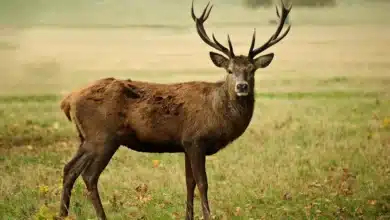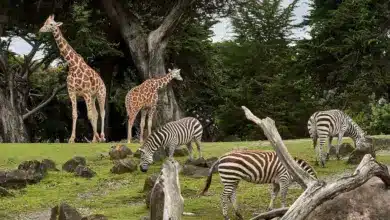How Pollution Affects Our Wildlife
How Pollution Affects Our Wildlife And Plants
Wondering how pollution affects our wildlife? The entire planet is in peril as the destructive effects of environmental degradation prevail. Despite the widely known consequences of factory farming for animals, many people often overlook them.
Pollution is a complex issue for wildlife as it harms the forest birds at the top of the hill and the sea creatures at the bottom of the ocean. This article reviews the intricacies of pollution entering various animal habitats as their ecosystems take a hit gradually and threaten their existence.
[ez-toc]
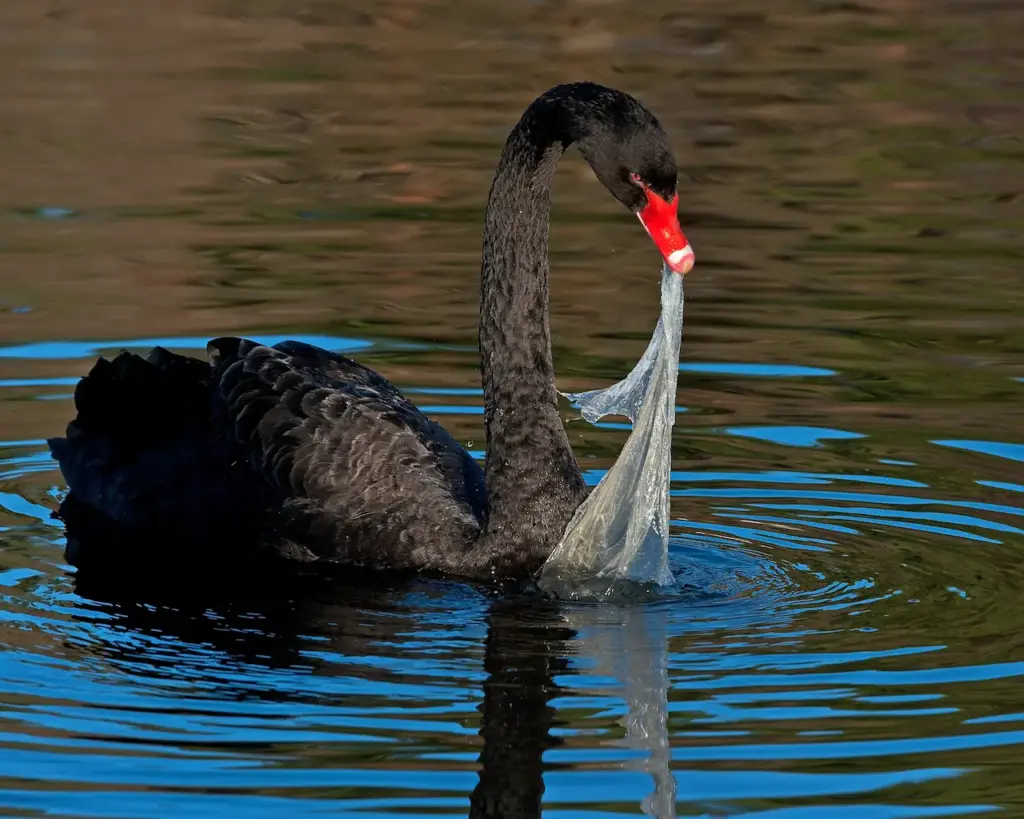
Habitat Destruction
One of the main aspects determining whether the pollution hurts animals is habitat alteration, which results from industrial pollution, deforestation, and rapid urbanisation. Many species get undesirable from heavily polluted industrial chemicals spilt into soil and water.
Habitat destruction is even more severe by agricultural chemicals running into waterways. The leading causes of deforestation are logging and agribusiness, which lead to the loss of vital ecosystems, the displacing of animal populations, and species extinction. The animals experience a sharp decrease in their reproductive success, a fierce struggle for resources, and increased predator vulnerability when their habitat shrinks and becomes less habitable.
Ecosystems face destruction due to habitat degradation, negatively influencing biodiversity and ecosystem services. Conservation plans involving reducing pollution and sanctuaries for species safety are essential for protecting and rejuvenating the ecosystem.
Water Pollution
The development of global water pollution is one of the critical issues for wildlife worldwide. Water becomes impure because of various pollutants like industrial chemicals, agricultural runoff, and untreated sewage. This polluted water is no longer hospitable to surviving multiple species, such as fish and snakes. The number of fish species is reduced due to pollution, which ends up causing the interruption of amphibian reproduction and posing a danger to marine animals.
And, as marine animals habitually either consume or entangle themselves with plastic waste, plastic pollution in the seas and freshwater streams can very dangerously cause vastly reduced biodiversity. Water pollution impacts animal habitats terribly; hence, a wide range of degradation, ecological imbalance, and biodiversity loss ensue. Green waste removal is needed to ensure that it does not enter the waterways and pollute the water and habitats of these animals.
The living and existence of water species are directly affected by checking and addressing pollution in water through proper waste management, ensuring agriculture, and enforcing stronger laws. Green waste removal is needed to ensure that it does not enter the waterways and affect these birds and wildlife.
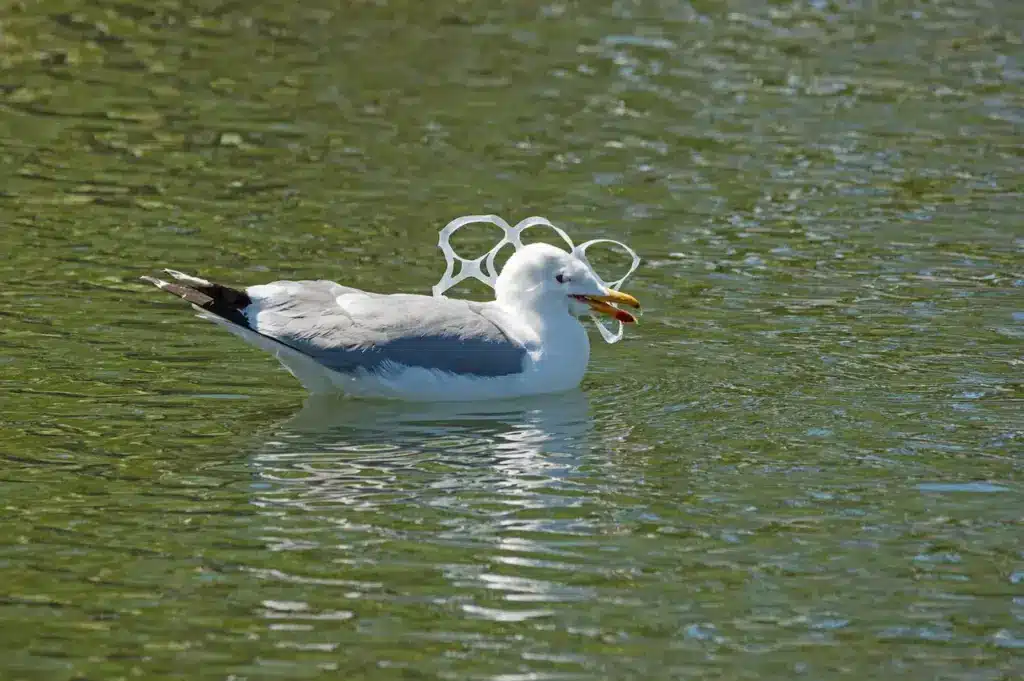
Air Pollution
One explicit way pollution impacts animals is via air pollution, which comes from automobile exhaust, industrial pollutants, and agricultural practices. The respiratory system of animals suffers because of sulfur dioxide, nitrogen oxides, and particulate matter, which worsen diseases and reproductive issues.
On the same note, acidic precipitation is generated by air pollution, and it does this to freshwater and plant ecosystems, which immediately affects the food and habitats many animal species rely on. The ecosystems and migration patterns of animals are altered by the climate changes caused by air pollution; many survivors would need to change or risk extinction. Throughout the globe, air pollution is hazardous for wild species; it disturbs their survival rate and living state.
Plastic Pollution Impact On Marine Life
Plastic pollution constitutes the main problem for maritime fauna, threatening hundreds of forms of life and creating a broad spectrum of ecological damages. This type of waste, containing the most significant volume of ocean debris, greatly influences marine animals and ecosystems.
Fish and other marine creatures take plastic waste for edible purposes and swallow it, thus causing gastrointestinal damage. Among the most common creatures that practice cannibalism are fish, seabirds, turtles, and marine mammals. It can choke them so they can’t feed themselves, which gradually makes them starve and ultimately brings death. The fact that plastics can be permeated by endocrine-disrupting chemicals into the environment, such as phthalates and BPA, puts the lives of marine organisms at risk.
As a matter of grave concern, the entanglement of marine mammals in plastics is another adversary. Plastic bags or stranded fishing nets, all discarded traces, could get entangled with creatures, hurting them and possibly causing them ing to suffocate or drown. As a result, this may compromise weightier marine organisms like seals and whales, interfering with their push, catching and evading prey.
In addition to waste, it modifies marine ecosystems and alters habitats, detrimentally affecting ocean biodiversity and food web balance. Invasive species can hitchhike on drifting plastic debris, transporting them thousands of miles away to other locations.
Microplastic is microscopic size and is less than five millimetres in diameter, and it has been found in every part of the marine ecosystem, such as deep-sea sediments and surface water.
Plankton, filter feeders and apex predators, for example, are all commonly ingested by animals and can cause those pollutants to bioaccumulate, magnifying the effects. Joint global efforts are needed to mitigate maritime waste problems. Action must be taken to cut down on plastic waste, improve waste management infrastructure and support recycling.
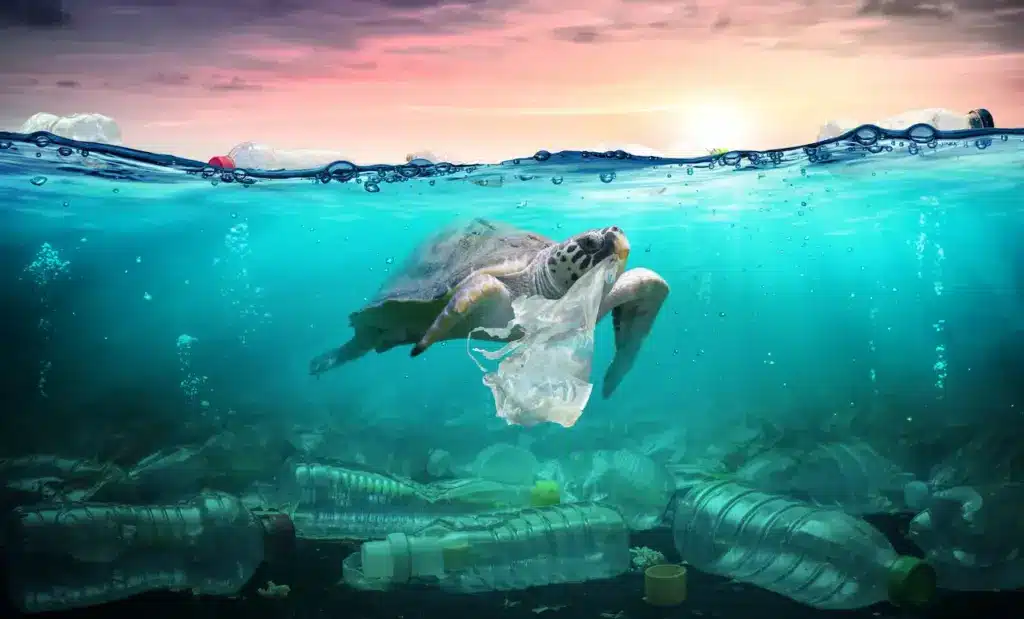
Effects Of Pollution On Birds
Thanks to their delicate respiratory systems and essential qualities of clean air and water, birds are the species that show more resentment to pollution influences. Birds are especially prone to pollutants in the air as they will be ingested, and the effects can cause harm to their respiratory systems and well-being at large.
Impurities affecting birds’ respiratory systems are particulates, nitrogen dioxide, sulfur dioxide, and ozone. These respiratory issues can happen due to decreased lung function, respiratory infections, and even death.
Moreover, air pollution, which decreases birds’ habitats and food supply, can also affect them in a negative sense. Accumulating pollutants in the respective greenery, soil, and water atmosphere further prevents birds from consuming good quality food. The number of waterfowl and shorebirds will be smaller because the fish and small creatures living in the water bodies may decrease.
Toxins accumulate in prey tissues next in the life chain, making birds that feed on contaminated food more susceptible to harm.
However, water pollution, particularly harmful chemicals, also poses challenges, especially for the birds which use aquatic environments to breed and eat. Heavy metals, such as herbicides and oil spills, could pollute water sources, hurting the birds and their reproduction.
The immediate danger of water pollution can be seen in sea and shore birds and waterfowl, which depend on a healthy aquatic ecosystem for mating and foraging on the ground.
Pollutants do not cause an organic disease in birds but change the activity rhythm and breeding patterns. If a bird’s habitat gets contaminated, it may move to another location or change its migratory pattern and nesting habits when the ecosystem is devastated.
The effects of pollution exposure encompass the reproductive system of a bird, causing it to be less fertile, abandon the nests, or struggle with hatchlings.
Impact Of Noise Pollution On Wildlife
Besides other major pollution types, people consider noise pollution a secondary issue, although it is probably the most dangerous for environmental systems and species. Noise pollution from human activity, such as industrialisation, urbanisation, transportation, and leisure, disrupts the lives of wildlife and ecosystems.
Sound is one of the constituent elements necessary for the hearing communication of the species, inter- and intra-species navigation, hunting, and reproduction. A plethora of novelty can derange these critical processes, thus raising structural stress, which means changing behaviour and decreasing successful reproductive rates.
Terrestrial animals will have higher chances of hunger or death from predation due to the tendency to be lost without a sense of direction or the inability to recognise predators and prey quickly. Underwater pets and other aquatic creatures like mammals rely on sound to escape predators, identify food, and avoid danger.
Sonar, from recreational boating to oil and gas exploration, shipping can also be detrimental physically. The powerful sound waves can injure the animals, and instinctive auditory signals can also be blocked, making communication impossible.
Species of birds are also severely damaged by noise pollution, with a decrease in their nests in metchanges being especially prone. Urban background, which noise can often harm birds’ ability to communicate, as characteristic songs become unpleasant and unclear.
Similarly, stress on physiological systems and various changes in breeding success or migration patterns of birds are further examples of the influence of noise pollution on bird populations.
In addition, they are the primary sensitivity targets during their sleep period because they use sound for navigation and hunting at night. The hunting success of gorillas may be disrupted by human-made sounds, increasing hunting energy consumption to some extent.
Pollution-Related Diseases In Wildlife
Wildlife diseases caused by pollution include a broad spectrum of sicknesses from exposure to various pollutants. Particulates and nitrogen dioxide are airborne contaminants that can cause respiratory diseases like asthma and bronchi, such as fever and lung workings in birds and mammals.
Upping the ante, such toxins as pesticides, heavy metals, and medications are released into aquatic environments via water pollution. This brings about significant health issues for fish, amphibians and invertebrates.
The endocrine system can be altered, reproduction can be hindered, and pollutants can compromise the immune system. As a result, wildlife species become fragile to diseases and pathogens. Moreover, terrestrial-based pollution invades soil, making it a host for diseases ranging from skin problems to heart or kidney failure in animals.
Air pollution-caused diseases could make animals suffer a lot, leaving their populations at serious risk of whole ecosystems collapsing. Conservation and mitigation measures involving pollution need to be rolled out to save wildlife from such close illnesses.
Climate Change
Pollution has made the world vulnerable to climate change, tremendously affecting animal kingdoms and habitats. Climatic variations rearrange ecosystems, meaning many organisms lose their typical habitat, migrate to other sites, and change their mating patterns. For example, receding sea ice makes it difficult for polar bears to find their drink places and lessens their food supply.
Some species, such as mammals, birds, and amphibians, will become victims of changes in precipitation patterns and extreme events, including floods and dry seasons. With increasing carbon dioxide levels, ocean acidification becomes a significant threat as corals and shellfish, fundamental habitats for many aquatic creatures, become at risk.
As climate-changing phenomenon increases, animals have to adapt to the fast-changing climatic conditions, or else they will face extinction. To rescue biodiversity and decrease the effects of climate change, immediate intervention is essential to reduce greenhouse gas emissions and conserve habitats and ecosystems for the upcoming generations.
Bioaccumulation And Biomagnification
Pollution has a devastating effect on animal populations through two essential processes: bio-accumulation and biomagnification.
“bioaccumulation” refers to the decrease, but continuous, in the concentration of contaminants in various tissues of an organism over a long period. Perturbations can be taken by plants or consumed by animals like fish when released into the environment.
Unlike other pollutants you filter out by natural process, this group of contaminants develops fatty tissues for a long time.
At different trophic levels, higher pollutant concentration accumulates by consuming polluted water or food items. Relics of the food web, at the top of which reside the highest-level consumers aptly described as apex predators, will tend to accumulate elevated levels of this pollution since they eat their victims and thus ingest poison.
Due to the high pollution levels that can damage the immune system, alter the physiological functions of organisms, and affect reproduction, wildlife is at risk.
Bioaccumulation and biomagnification tend to aggravate ecological fragility and population decline, thus indicating the conspicuous and crucial nature of pollution mitigation projects to save diverse living creatures.
Endocrine Disruption
One of the main ways pollution affects wildlife is its role in the endocrine disruption that leads to profound changes in animals’ physiology and unique behaviour. Animal hormone production levels are deranged as their environment gets contaminated with chemicals that act as endocrine disruptors (EDCs).
Industrial chemicals, herbicides, and polymers, including EDCs, simulate or block natural hormones, which lead to significant health conditions.
If a wildlife species faces EDCs, its immune, metabolic, and reproductive systems may all be impaired. EDCs, for example, can affect the reproductive system, causing male imbalances in sex ratio, infertility, and reproductive function disorders.
Abnormalities in impacted populations. Furthermore, they may compromise immunological responses, increasing the susceptibility of animals to illnesses and infections.
Hormonal disruption can also manifest in animals by changing their behaviour, making them unable to use their communication signals, find a way to navigate the environment, and forage in the process. Habitual actions may lead to the destruction of the populations of animals by lowering the tendency to survive and articulating the reproduction rates.
Interference with the endocrine system may create a permanent, non-beneficial situation for animal populations, such as lowered genetic variation and fewer individuals. Hence, safeguarding the health and viability of wildlife biodiversity globally requires addressing pollution and reducing the discharge amount of EDCs to the ecosystem.
Conservation Efforts And Solutions
Conservation initiatives and elimination of pollution are obligatory to reduce the adverse effects of pollution on animals. Restoration initiatives are needed to repair ecosystems and enable nature to provide places for wildlife to inhabit.
Also, prohibiting polluting discharges from the processing industries, including improving waste management techniques, represents pollution control methods that can reduce the amount of hazardous material discharged into the environment. Besides, promoting sustainable management of resources will keep the ecosystem manageable.
PSAs and education initiatives educate citizens on how to act more eco-friendly and increase their knowledge of ecosystem conservation.
Policy And Legislation For Wildlife Protection
Launching, regulatory and policy tools are instrumental in safeguarding animals from the mood swings brought by pollution. Governments and global agencies enact laws and regulations to decrease pollution, safeguard the natural environment,t and protect endangered species.
This involves making protected areas for animal existence, using pesticides and other chemicals, and issuing emissions guidelines for industrial enterprises.
Beyond that, global treaties such as the Ramsar Convention on Wetlands and the Convention on Biological Diversity create a multilateral effort among countries to support tackling global environmental issues.
Implementing relevant animal welfare legal norms is essential for dissuading criminal activity, including poaching and habitat destruction. Public awareness is vital to encouraging the responsible use of these resources and fostering a conservation culture.
We will secure a sustainable future for biodiversity and reduce pollution-caused damage that harms animals by putting all possible rules and regulations in place.
Conclusion
Pollution is endangering biology and ecosystems today and leading to species extinction. The effect of humans on wildlife is diverse and erased, from habitat loss to bioaccumulation of dangerous substances that act as pollutants.
To resolve pollution causes, mid- to long-term actions are necessary to build sustainable ways to protect wildlife from the negative consequences of pollution. We can play our part in the maintenance of the biodiversity of the Earth and also have better conditions for animals through conservation measures, pollution control, and love for the environment.
